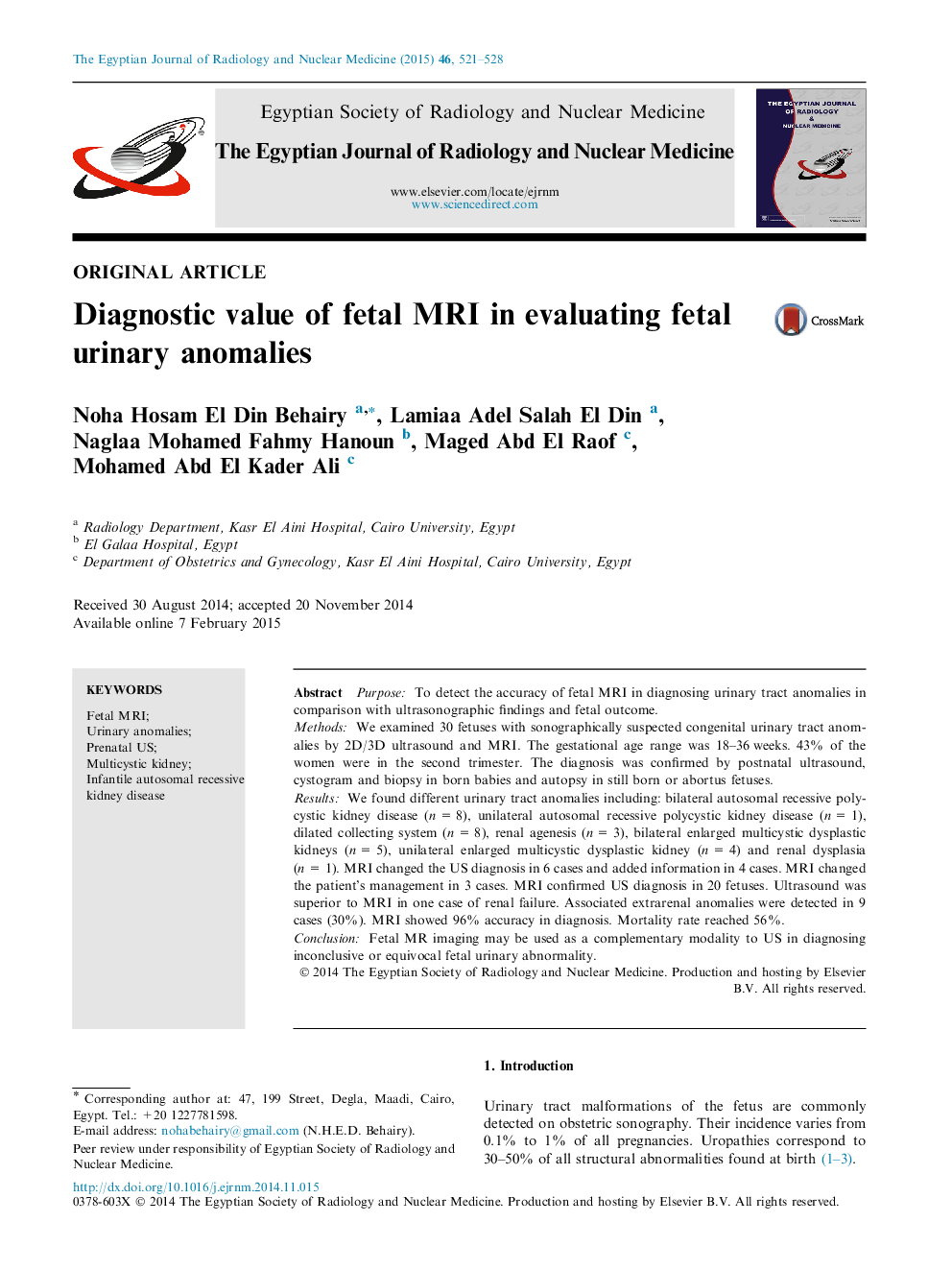| Article ID | Journal | Published Year | Pages | File Type |
|---|---|---|---|---|
| 4224199 | The Egyptian Journal of Radiology and Nuclear Medicine | 2015 | 8 Pages |
PurposeTo detect the accuracy of fetal MRI in diagnosing urinary tract anomalies in comparison with ultrasonographic findings and fetal outcome.MethodsWe examined 30 fetuses with sonographically suspected congenital urinary tract anomalies by 2D/3D ultrasound and MRI. The gestational age range was 18–36 weeks. 43% of the women were in the second trimester. The diagnosis was confirmed by postnatal ultrasound, cystogram and biopsy in born babies and autopsy in still born or abortus fetuses.ResultsWe found different urinary tract anomalies including: bilateral autosomal recessive polycystic kidney disease (n = 8), unilateral autosomal recessive polycystic kidney disease (n = 1), dilated collecting system (n = 8), renal agenesis (n = 3), bilateral enlarged multicystic dysplastic kidneys (n = 5), unilateral enlarged multicystic dysplastic kidney (n = 4) and renal dysplasia (n = 1). MRI changed the US diagnosis in 6 cases and added information in 4 cases. MRI changed the patient’s management in 3 cases. MRI confirmed US diagnosis in 20 fetuses. Ultrasound was superior to MRI in one case of renal failure. Associated extrarenal anomalies were detected in 9 cases (30%). MRI showed 96% accuracy in diagnosis. Mortality rate reached 56%.ConclusionFetal MR imaging may be used as a complementary modality to US in diagnosing inconclusive or equivocal fetal urinary abnormality.
